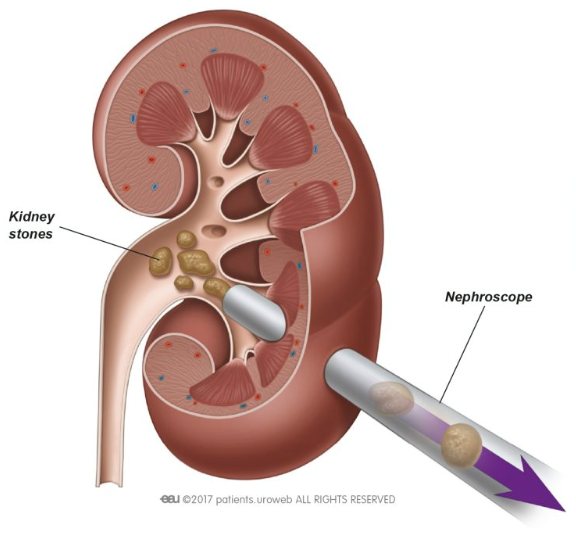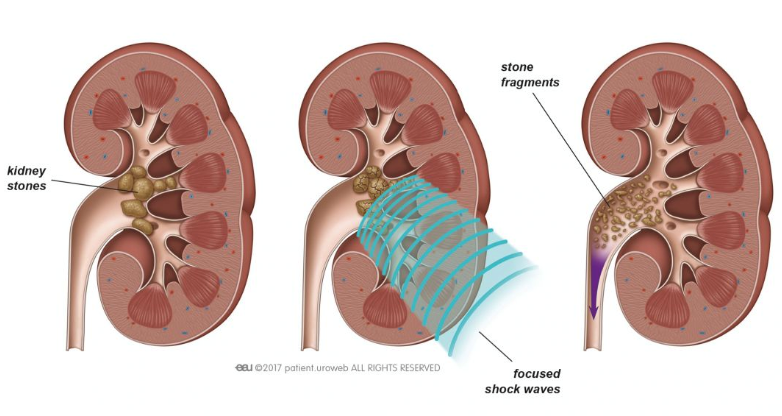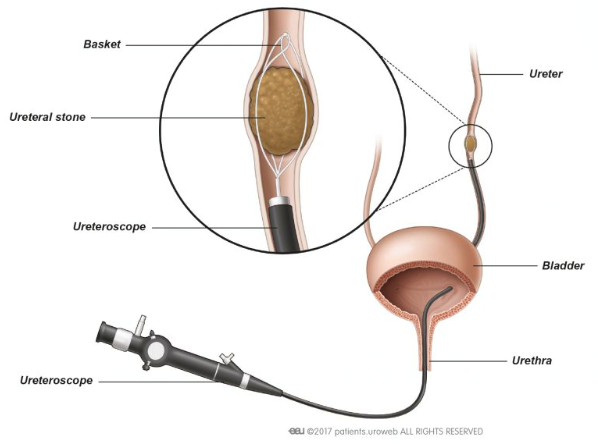When the kidney stones are too large or complex for Extracorporeal Shock Wave Lithotripsy (ESWL), another treatment option is Percutaneous Nephrolithotomy (PCNL). This operation involves a small incision over the side, where an instrument called a nephroscope is passed into the kidney, and the stone is directly visualised and broken down with either an ultrasonic, pneumatic or laser device. Depending on the size and type of stone, there is also an option of newer miniaturised access techniques, allowing the skin incision to be as small as possible.

After the operation, you will usually need to be warded overnight for observation. You may also have a temporary catheter placed in your side, which can be removed after a day or two, a decision made by the doctor.
What are the possible complications?
Some complications that may occur with PCNL include:
- Bleeding, in rare occasions needing blood transfusion
- Urinary tract infection
- Injury to the kidney and surrounding organs
In some cases, more than one incision may be necessary to reach all the stones in the kidney. In cases with kidney stone fragments remaining, further procedures may be required.
With improved technology and equipment, kidney stones can be treated with a more personalised approach. In cases where patients present with many large kidney stones, a tailored solution involves using endoscopic combined intrarenal surgery intrarenal surgery (ECIRS), which integrates concurrent PCNL and ureteroscopy to optimize sone clearance within a minimal operative timeframe.




















